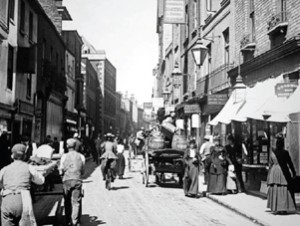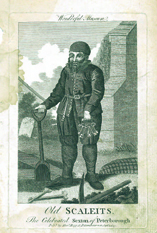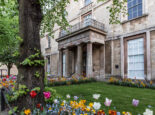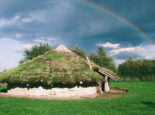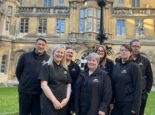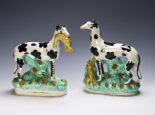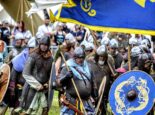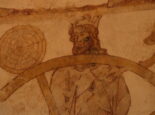Talking History
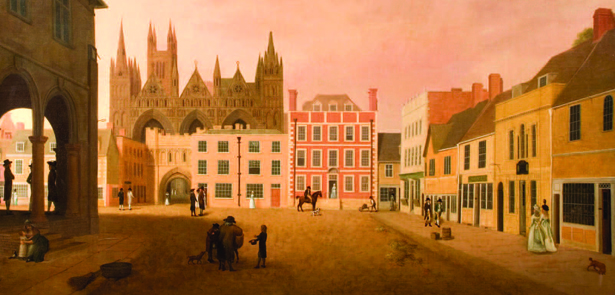
This autumn sees a new series of talks at Peterborough Central Library covering various aspects of the city’s history, from ancient grave diggers to dodgy elections. Vivacity Archives and Collections Manager Richard Hunt guides us through the centuries...
Peterborough rebuilds
Stephen Perry is well-known for his annual talks on local history, and for his first talk on 16 September takes us to Peterborough in the 1920s. The whole country was picking itself up from the ravages of the First World War and Peterborough’s industry had suffered a great deal. Just after the end of the war, the mayor George Nicholls proposed that the city’s war memorial to those who had died should be a new hospital. Donations were collected – at first enthusiastically – but it took until 1925 before enough money had been gathered that the foundation stone could be laid on the site on Thorpe Road. The building was completed in 1928 and the hospital moved from its previous site on Priestgate (now Peterborough Museum). No less significant were changes to the centre of Peterborough around Bridge Street. This part of the city had changed little since the medieval period. The top end of the street was known as Narrow Bridge Street as it wasn’t wide enough to let two buses pass one another. At the time all traffic wanting to go from the north of the city to cross the river had to proceed through this small gap which led to huge bottlenecks. All sorts of weird and wonderful proposals were put forward in the local newspaper for how to realign the streets. In the end, the council opted to demolish the entire east side of Bridge Street, leading to the destruction of some of Peterborough’s most historic buildings. As part of the alterations they created the present Town Hall which opened in 1929.
Tudors and Stuarts
On 8 October Don Chiswell continues our series of talks with a look at Peterborough during the Tudor and Stuart period. It’s hard to get away from the Reformation and the effects this had on the Abbey. Henry VIII split from the Catholic Church in the 1530s and Peterborough Abbey became victim to the dissolution of the monasteries as Henry VIII used monastic lands and valuables to fund his wars overseas. The last Abbot of Peterborough Abbey, John Chambers, was a master of selfpreservation as he ensured that not only should Peterborough Abbey avoid becoming a ruined monument like so many monasteries elsewhere in Britain, but it should be the cathedral church of a new diocese of Peterborough, with himself as the first bishop. Ordinary life in Peterborough probably continued with few people feeling the effects of the turbulent times at the Abbey. The city was governed (if you can use such a term) by a committee of local men called Feoffees. They looked after the upkeep of St John’s church in the market place, repaired the roads and public buildings and looked after the poor. Peterborough didn’t get a proper town council until 1874 and so the Feoffees were the best we had. Unfortunately, the ‘best’ was pretty poor and they were frequently chastised for failing to maintain the church or the roads. The town bridge was not repaired and reported be swaying dangerously when traffic passed over it. The end of the Stuart period was no less dramatic for the cathedral than the start of the Tudor period had been. During the Civil War, Parliamentarian soldiers used the city as a base from which to attack the Royalists in Stamford and Crowland. Whilst here, they took the opportunity to ransack the cathedral, destroying monuments, stained glass, prayer books and records.
A royal gravedigger
Some of you may have noticed a painting of a man on the west wall of Peterborough Cathedral. This is Old Scarlett, the subject of Stuart Orme’s talk on 21 October. Robert Scarlett was born in 1496 and lived to the ripe old age of 98 – an extraordinary feat in the Tudor period. He married his first wife Margaret who died in 1584. He then married his second wife, Maud, aged 89. Scarlett worked as parish sexton in Peterborough, a role which involved burying the dead in the parish church yard, buying communion bread and tolling the bells. This should have been a routine job but Peterborough in this period was far from a routine place! Henry VIII’s first wife, the divorced Katharine of Aragon, died at Kimbolton in 1536 and was buried at Peterborough Cathedral. Robert Scarlett was the man tasked with digging her grave. When plague hit the city in 1574 he buried many of his contemporaries and yet still managed to avoid catching the disease himself. At the age of 91 he was once again at the funeral of royalty, when Mary Queen of Scots had her funeral at Peterborough Cathedral after her execution at Fotheringhay.
Elections, Georgian style
The Stuart period had closed with drama – the ransacking of the cathedral – and the Victorian period is known as being a time of huge growth in Peterborough due to the arrival of the railways, but the Georgian period is often seen as a rather dull gap in between. I will aim to dispel this myth in our talk on 4 November! Elections in Georgian Peterborough were pretty debauched affairs. The city could, in theory, elect two MPs. However, elections occurred infrequently as normally there were only ever two candidates! One would almost always be nominated by the Fitzwilliam family at Milton Hall who would be assured of support as many Peterborough voters were tenants of the Fitzwilliam estate and would not dare vote against them. However, in 1767 there were three candidates standing, as Matthew Wyldbore decided to enter the fray as an Independent. In this period, rather than bribing them outright, candidates used to ‘treat’ potential voters. This essentially involved paying everyone’s bar bills for a considerable period before polling day. Each Peterborough candidate had spent around £4000 (about £300,000 in today’s money) treating the electorate before Wyldbore paid one of the other candidates sufficient money to withdraw from the race and he was elected unopposed. When elections did take place the victorious candidate would have been ‘chaired’ through the city whilst the other candidate’s headquarters would be trashed and possibly set on fire. This period was most definitely far from dull!
Peterborough rebuilds Britain
On 18 November Stephen Perry joins us again with a look at Peterborough in the 1950s. Once again the country was recovering from the after effects of war. Many of you will remember rationing still being in place until 1954. The need for construction materials to rebuild parts of Britain that had suffered badly during the Blitz meant that London Bricks from Peterborough were needed everywhere. To meet the demand the Brick Company brought in Italian labourers to augment the workforce, marking the origins of this large community in the city. Large parts of the city were also redeveloped and the first large council estates were created at Dogsthorpe, Park Lane and Bluebell Avenue. These were built alongside clearance of much of the worst slum housing to the east of the city.
All the talks take place at 2.30pm in the John Clare Theatre in Peterborough Central Library and last just over an hour. Tickets are available on the door, priced at £5 for Adults and £3 for Concessions. Refreshments are available after every talk. For more information ring Vivacity’s Archives Service on 01733 864160. www.vivacity-peterborough.com/libraries-and-archives



